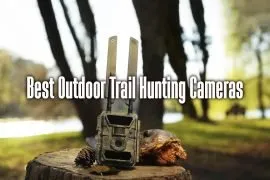Hi there, novice hunter! Do you enjoy the thrill of the chase, the beauty of nature, and the satisfaction of a successful hunt? Then, allow me to introduce you to the thrilling world of deer hunting. It’s not just about the hunt; it’s also about developing patience, resilience, and a deep appreciation for nature.
So, what is elk hunting for beginners? Well, it’s all about learning the ropes of one of the most challenging yet rewarding types of hunting. Elks are large deer species known for their keen senses and majestic antlers. Hunting them requires strategy, patience, and skill.
As a beginner, there are a few things you need to know. First, it’s essential to familiarize yourself with the elk’s habitat and behavior. Spend time studying their patterns and understanding their habits. This knowledge will significantly influence your hunting tactics.
Second, equipment matters. You’ll need a good rifle or bow, depending on your preference. Remember to hunt boots, camouflage clothing, and other gear to protect you from the elements. Also, a good set of binoculars will come in handy for spotting elk from a distance.
You might be wondering, “Why go through all this trouble? Why is elk hunting useful?” Let me tell you, it’s more than just a hobby. Elk hunting can strengthen your physical and mental endurance. It involves long hours of hiking in rough terrain and unpredictable weather conditions, which can significantly improve your stamina and resilience.
Moreover, it cultivates patience and strategic thinking. You must be patient while tracking the elk, waiting for the right moment to take your shot. It would be best if you also outsmarted these intelligent creatures.
Furthermore, it brings you closer to nature. It lets you experience the great outdoors in an intimate and challenging way. Your food is as fresh as it gets since you know where it originates.
Finally, there’s the aspect of sustainable living. Hunting your food can be a more ethical choice than buying from commercial meat industries. You know exactly where your food comes from, and it’s as fresh as possible.
So, are you ready to embark on this exciting journey? Elk hunting is not just a pastime; it’s a lifestyle. It’s about embracing the challenges and joys of the great outdoors. Trust me, once you taste elk hunting, there’s no turning back!
Understanding Elk Behavior And Habitats
Table of Contents
Elk, scientifically known as Cervus canadensis, are large mammals belonging to the deer family and are renowned for their impressive size, striking antlers, and significance in North American ecosystems. To understand elk behavior and habitats, one must delve into the following key aspects:
- Natural Range- Elk inhabit predominantly the North American continent. Their historical range spanned from northern Canada to the northern regions of Mexico; however, their territory has gradually become limited due to human activities and habitat changes.
- Habitats- Elk are known for their remarkable adaptability, and they can thrive in various environments, from lush forests and expansive grasslands to arid deserts. They prefer a combination of open meadows and wooded areas for grazing and cover. Access to water sources is crucial.
- Diet- Elk are herbivores, predominantly feeding on grasses, forbs, and woody vegetation. Their dietary preferences may exhibit seasonal variations, with an inclination towards browsing during the winter months.
- Social Structure- Elk exhibits a hierarchical social structure. They frequently establish herds for safety and effective foraging, particularly in the winter. During the rut or mating season, bull elk use fights to demonstrate their authority.
- Mating Season (Rut)- The rut usually takes place in the autumn, during which male elk engage in antler-based competition for mating opportunities. During this period, vocalizations and displays are frequently observed.
- Migration- Elk populations in certain areas migrate seasonally, retreating to lower altitudes in the winter and rising again in the summer. Migration patterns differ depending on local conditions.
- Communication- Elk communicate through diverse vocalizations, such as bugles and grunts. These vocal cues are vital in preserving social order during the rut.
- Conservation- Although overhunting and habitat degradation have affected elk historically, effective conservation measures like controlled hunting and habitat preservation have helped maintain elk populations in many regions.
- Predator- Bears, mountain lions, and wolves are among the huge animals that stalk elk. They can avoid predators thanks to their herding instincts and state of vigilance.
- Human Interaction- Elk are a sought-after game species, drawing the attention of hunters and wildlife enthusiasts alike. Responsible wildlife management is crucial for balancing human interests and elk conservation.
To protect elk and manage animals, it is essential to comprehend their behavior and habitats. This requires a profound understanding of their ecological significance, social interactions, and the many factors impacting their populations in their natural habitats.
Choosing the Right Gear and Equipment for Elk Hunting For Beginners
Selecting the correct gear is essential to preparing for your elk hunting adventure. Here’s a brief guide to help you make the right choices:
- Firearm or Bow- Your choice of a hunting weapon usually depends on personal preference and local regulations. Whether you opt for a high-caliber rifle or a compound or recurve bow, ensure it’s something you’re comfortable with and can handle accurately and safely.
- Ammunition or Arrows- The size and toughness of elk necessitate the use of heavy-duty ammunition for rifles or sturdy, sharp broadheads for arrows. Your shots need enough power to ethically and effectively bring down an elk.
- Optics- Quality binoculars or a spotting scope are crucial for locating elk from a distance. A good rifle scope is also essential for accurate long-distance shots.
- Clothing- To accommodate changing weather, wear layers of clothing. Wear camouflage or colors that blend well with the environment. Remember to pack a sturdy pair of hunting boots for those long treks.
- Backpack- A comfortable, spacious backpack must carry your gear, food, water, and, hopefully, your elk meat after a successful hunt.
- Camping Gear- If you’re planning an overnight hunt, you’ll need a tent, sleeping bag, cooking gear, and other necessary items.
- Knives and Tools- A sharp, durable hunting knife is critical for elk field dressing. Some hunters also find it helpful to have a compact saw for removing antlers and a bone hook for gutting.
- Navigation Tools- GPS devices, physical maps, and compasses can be lifesavers in the wilderness. They can help you find your way in and out of the hunting area.
- First Aid Kit- Safety should always be the priority. Make sure to carry a first-aid kit ready to handle any minor injuries or emergencies you might encounter in the field.
- Hunting License and Tags- Last but not least, ensure you have the necessary legal paperwork, such as a hunting license and elk tags, before heading out.
Preseason Scout Your Elk Unit From Every Angle
A Preseason Scout Your Elk Unit From Every Angle is an extensive guide and approach for hunters preparing to pursue elk during the hunting season. This resource highlights the significance of thorough preparation, particularly during the preseason, to enhance the likelihood of a successful hunt.
Essential elements of Preseason Scout Your elk unit from every angle comprises:
- Scouting- This guide emphasizes the importance of thorough scouting well before the hunting season kicks off. Its content encompasses techniques for locating and monitoring elk populations, investigating their behaviors, and identifying prospective hunting grounds.
- Technology- The resource delves into utilizing state-of-the-art technology such as trail cameras, GPS devices, and mapping apps to facilitate scouting and strategic planning for your hunt. Hunters can collect helpful information about elk movement and habitat using these instruments.
- Habitat and Terrain- A comprehensive understanding of the elk unit’s specific habitat and terrain is imperative for a fruitful hunting experience. This guide offers valuable insights on analyzing and interpreting maps, topography, vegetation, and other significant environmental factors.
- Hunting Strategies- Preseason Scout Your Elk Unit From Every Angle guides on developing effective hunting strategies using the information collected during scouting endeavors. This involves finding the best spots, setting up stands or blinds, and timing your approach for the best possible results.
- Regulations and Ethics- It is imperative for hunters to possess comprehensive knowledge of local hunting regulations and adhere to ethical hunting practices. The resource may also offer guidance on acquiring the requisite permits and licenses.
- Safety- Safety is an essential consideration for every hunting trip. This guide may provide valuable insights into wilderness safety, critical survival skills, and effective emergency preparedness.
Hunters can substantially increase their chances of a responsible and successful hunt by carefully planning and scouting the elk unit. Preseason Scout Your Elk Hunting Area From Every Angle is an essential guide for hunters who want to optimize their hunting experience and maximize their time in the wild.
Hunting In The Right State
Hunters looking for the ideal place to follow their passion can find a complete guide to hunting in the right state. Whether you are a passionate hunter seeking new opportunities or a novice searching for the perfect hunting destination, this comprehensive resource offers vital information to help you make informed decisions.
Key Features:
- State-by-State Profiles– The guide provides comprehensive profiles of every U.S. state, encompassing hunting regulations, seasons, and the variety of game species accessible. This information enables hunters to make informed decisions regarding their hunting locations.
- Game Species Overview– Explore the vast array of game species found in various states, encompassing deer, turkey, waterfowl, and upland birds. Recognize the unique hunting chances that exist in each area.
- Licensing and Permit Details– Find out which hunting licenses and permits are needed in each state, how much they cost, how to apply, and whether there are any additional requirements for nonresident hunters.
- Accommodation and Amenities– Explore details regarding lodging options, hunting camps, and additional amenities offered in hunting regions, guaranteeing a pleasant and comfortable hunting experience.
- Tips and Tactics– Both new and experienced hunters can enhance their hunting abilities and raise their chances of success by using helpful advice and strategies from seasoned hunters in Hunting In The Right State.
- Conservation Efforts– Stay updated on wildlife conservation initiatives and organizations committed to safeguarding hunting traditions and preserving natural habitats.
- Safety and Ethics– To guarantee a responsible and pleasurable hunting experience while honoring the environment and wildlife, educate yourself on ethical and safe hunting techniques.
- User-Friendly Format- The guide’s state-specific sections and user-friendly format make it easy to navigate and provide clear, concise information.
For hunters looking to get the most out of their trips and time in the great outdoors, hunting in the right state is a priceless resource. This book is your go-to guide for deciding which state is best for your next hunting trip, whether you’re considering going to your home state or exploring new grounds.
Find The Perfect Time To Hunt
Determining the optimal timing for elk hunting for beginners is paramount to achieving a successful and rewarding experience. Elk hunting season can vary depending on where you are, but here are some general guidelines. The best hunting season in the western United States, where elk are typical, usually lasts from September to October in the early fall. This period coincides with the elk rut, or mating season, during which bulls exhibit increased activity and vocalization, facilitating their detection. During this period, the elk become more visible, thereby increasing the likelihood of a successful hunt.
Furthermore, there are usually no severe cold or snowfall issues because of the generally mild weather. The post-rut phase, when elk are concentrated on feeding, may coincide with the shooting seasons in other areas, including the Rocky Mountains, where they may last into November and December. You may design the ideal elk hunting experience by learning about local rules, speaking with seasoned hunters, and considering your hunting preferences and location while choosing the best time to hunt. Determining the best time for an unforgettable and productive elk hunting trip requires careful consideration of elements including weather, hunting pressure, and your skill level.
Ensure A Safe Trip With These Safety Precautions
It is crucial to ensure a safe journey during an elk hunting vacation. Hunters can reduce hazards and improve their experience by adhering to a list of fundamental safety procedures. Being organized is the most important thing to do. Getting all the required licenses and permits, learning the local hunting laws, and telling someone about your intended hunting route and anticipated return time are all part of this. It is crucial to dress appropriately, considering the rapid changes in weather conditions experienced in different countries. Layered clothing, waterproof gear, and high-visibility blaze orange attire are essential.
When operating in the field, it is imperative to uphold and adhere to proper firearm safety protocols. Keep your finger off the trigger until you’re ready to fire, handle every firearm as though it were loaded, and maintain a safe point of aim. Ensure effective communication with fellow hunters to prevent accidents and utilize radios or GPS devices for maintaining connectivity, particularly in areas with limited cell phone reception. Furthermore, be aware of your surroundings and watch for signs of other hunters or wildlife. A thorough understanding of elk behavior and habitats is crucial to ensuring success.
Ensure physical and mental preparedness by maintaining proper hydration, ample rest, and heightened alertness. Take the necessary breaks and avoid exceeding your limits. In case your hunt is successful, make sure you have the tools and expertise to appropriately field dress and pack away your game.
In essence, a secure elk hunting expedition requires thorough planning, strict adherence to safety protocols, reverence for wildlife, and the capacity to adapt to shifting circumstances. Using these safety measures, hunters can lessen the chance of mishaps and injuries, guaranteeing a safe and enjoyable hunting session.
Be Comfortable And Experienced With The Right Bow Or Right Arrow
Choosing The Right Bow
Archery lovers who use a right-handed bow are the target audience for the book Be Comfortable and Experienced With Your Right Bow. The goal of this resource is to assist people in becoming more proficient and at ease with their right-hand bows so they can enjoy and succeed in archery. This manual offers insightful advice, practical strategies, and techniques for perfecting your right-handed bow, regardless of your experience level. Aiming skills, bow maintenance, proper grip and stance, and other related topics may be covered. By adhering to the recommendations outlined in this guide, archers can elevate their precision, reliability, and overall fulfillment in archery.
Choosing The Right Arrow
For those who are interested in archery and wish to become proficient with their right-handed arrows, Be Comfortable and Experienced With Your Right Arrow is an extensive manual. This resource provides insightful advice and practical recommendations to help all archers, regardless of experience level, achieve accuracy and comfort when using their right-handed arrow equipment. Choosing the appropriate arrows, practicing shooting form, increasing accuracy and consistency, and maintaining your equipment are just some of the topics covered in the guide. Archers utilizing right-handed arrows can improve their technique and have a more fulfilling and successful shooting experience by applying the advice on this website.
Learn To Use All Equipment, Especially How To Blow An Elk Call
When embarking on the pursuit of elk hunting for beginners, it is vital to acquire the necessary skills to proficiently utilize all of your equipment, with particular attention given to mastering the technique of blowing an elk call. An outline of the essential information is provided below:
- Equipment Familiarization- Begin by becoming intimately familiar with and comprehending the functionality of all the gear you’ll utilize, such as your hunting rifle, radios, and GPS units.
- Elk Calls- Elk sounds are necessary for luring and interacting with elk. Different types of elk calls, including bugle calls and cow calls, are each designed for distinct purposes during various hunting phases. Ensure you acquire the skills to generate authentic elk sounds using these calls, enhancing your likelihood of achieving positive outcomes.
- Practice and Technique- Mastering the art of producing a compelling elk call necessitates dedicated practice. To attract elk to your area, you can use calls replicating the sounds of an elk’s bugle or cow cries. Devote time to honing your calling techniques to ensure your calls are as persuasive as can be.
- Timing and Strategy- Gain a comprehensive understanding of when and how to utilize elk calls during your hunting expedition. Timing is paramount, and strategically employing calls at the moment can significantly enhance your success rate. Elk exhibit various vocalizations during the rut, making it crucial to understand when to engage in bugle calls, cow calls, or other sounds.
- Silence and Patience- It’s crucial to understand when to be quiet and when to make a phone call. Elk are remarkable for their sensitivity to their surroundings, and excessive calling can startle them. Patience is crucial; sometimes, it is advisable to allow things to come to you.
- Safety and Legal Considerations- Before using equipment in the field, adhere to all safety guidelines and legal regulations for hunting in your area. This involves getting the required permits and licenses.
- Continuous Learning- Elk hunting and using equipment like elk calls is a skill you can continually improve. Engage in ongoing learning, keep up with the latest techniques, and stay informed about any changes in hunting regulations.
Please keep in mind that elk hunting for beginners demands dedication, skill, and a profound reverence for both the animals and the environment. Learning how to use your equipment effectively, especially mastering elk calls. It can make your hunting experience more rewarding and increase your chances of a successful hunt.
FAQs
Q1. What is elk hunting, and why do people find it appealing?
Elk hunting involves the pursuit of wild elk for both sport and, in many cases, sustenance. People are drawn to it for multiple reasons, such as the inherent challenge, the chance to connect with nature, and the potential for a gratifying and sustainable supply of lean protein.
Q2. Do I need a license to hunt elk, and how do I obtain one?
A hunting license is generally required to hunt elk, and the specific requirements may vary depending on the location. To receive one, you will need to check with the wildlife agency in your state or the state in which you intend to hunt. The agency will provide details about the application procedure, costs, and other requirements.
Q3. What gear and equipment do I need for elk hunting as a beginners?
Essential equipment comprises a high-powered rifle or bow, suitable ammunition or arrows, binoculars, durable clothing, comfortable boots, a backpack, game calls, and a survival kit. Ensure that you thoroughly investigate the particular prerequisites for the hunting location you have selected.
Q4. Where can I hunt elk, and when is the hunting season for beginners?
The locations and seasons for elk hunting differ across states and regions. Please refer to the local wildlife agency or website for the latest information on hunting areas and season dates. Several highly regarded states for elk hunting are Colorado, Montana, and Wyoming.
Q5. What hunting techniques are commonly used for elk?
Elk hunting techniques encompass spot-and-stalk, calling, and still-hunting methods. Spot-and-stalk entails surveying the area for elk and subsequently closing in for an accurate shot. Elk are attracted to calls that imitate their noises. Still-hunting involves moving slowly and silently through established elk habitat.
Q6. How do I prepare physically and mentally for elk hunting?
Elk hunting can be physically demanding. You must train for endurance, strength, and hiking ability. Mentally, prepare for long days, challenging conditions, and the possibility of not harvesting an elk. Stay positive and patient.
Q7. What are the rules and regulations regarding elk hunting, such as bag limits and tagging requirements?
Rules and regulations vary by location, so it’s crucial to review the specific rules for your hunting area. Bag limits, tagging requirements, and other regulations ensure the sustainable management of elk populations.
Q8. What should I do if I harvest an elk?
After harvesting an elk, you must field dress and quarter it, then transport it to a cooler or meat processing facility as soon as possible. Additionally, you have to declare your harvest following municipal laws.
Q9. Are there any ethical considerations in elk hunting that beginners should know?
Yes, ethical hunting practices are crucial. In addition to honoring private property limits and adhering to all hunting laws, hunters should strive for a swift and compassionate death. Moreover, it is crucial to acknowledge the magnificence and significance of elk beyond the act of hunting.
Q10. Where can I find resources to learn more about elk hunting for beginners?
Resources encompass state wildlife agencies, online forums, hunting magazines, and local hunting clubs. Consider taking a hunter education course, as it’s an excellent opportunity to learn about safety, ethics, and practical hunting skills.
Q11. What equipment do I need for elk hunting for beginners?
To ensure a successful hunting trip, it is crucial to have the right equipment. This includes a high-powered rifle, archery gear for bow hunting, suitable clothing and boots, binoculars, a hunting knife, maps or a GPS for navigation, and a means of transporting your harvested elk, such as a game cart.
Q12. Is it necessary to take a hunter safety course before elk hunting for beginners?
The requirement to take a hunter safety course before elk hunting for beginners varies by state and is subject to change over time, so it’s essential to check the specific regulations in your state or the state where you plan to hunt elk. However, in the United States, many states do have mandatory hunter safety education requirements for all new hunters, regardless of the game they intend to pursue.
Hunter safety courses are typically designed to educate beginners on hunting, firearm safety, wildlife conservation, and ethics. Even if not explicitly required, all novice hunters should take a hunter safety course to ensure their safety and the safety of others in the field and promote responsible and ethical hunting practices.
Conclusion
In conclusion, learning to hunt elk is an exciting process with rewards and obstacles. Even though this comprehensive guide has given you insightful advice and pointers to get you started. It is important to remember that elk hunting is about more than simply bringing home a trophy. It’s also about experiencing nature fully, learning about elk behavior, and cultivating a profound respect for the wild.
For novice hunters, it is crucial to approach elk hunting with patience and unwavering dedication. You will encounter challenges, and achieving success may take time; however, the learning process is of great value. Always prioritize safety, ethics, and conservation when hunting these magnificent creatures.
It is crucial to consistently pursue knowledge, seek advice from seasoned hunters, and adhere to the laws and regulations of your hunting region. With time and dedicated practice, your skills will enhance, and your comprehension of elk and their habitat will deepen.
Ultimately, elk hunting for beginners can be a transformative experience that fosters a deep connection with nature, pushes personal boundaries, and creates enduring memories. Engaging in this pursuit not only allows you to participate in a time-honored tradition. It also enables you to contribute to the preservation of these majestic animals and their natural habitat. So, get out there, embrace the adventure, and may your elk hunting journey be fulfilling and sustainable.






